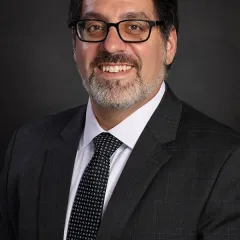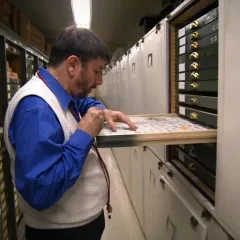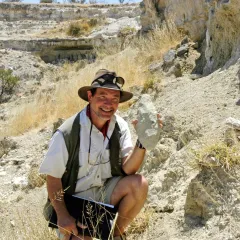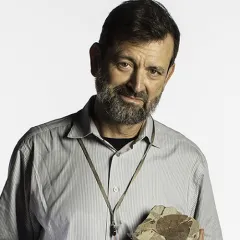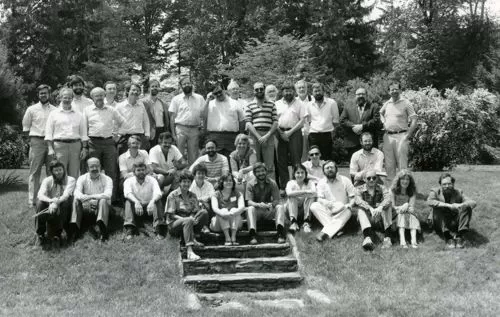
Search
ETE Program History
Since 1990, ETE has generated more than 250 publications, supported more than 30 internships, 10 graduate student positions, 40 pre- or post-doctoral positions, this website, and a publicly accessible database with over 6700 localities. A more detailed record of our activities and accomplishments over the past 20+ years is summarized in the following paragraphs.
ETE's Beginnings
The Evolution of Terrestrial Ecosystems program was conceived in October of 1986 by NMNH curators Kay Behrensmeyer, Bill DiMichele, Rick Potts, Scott Wing and post-doctoral fellow, John Damuth. The program was initiated in 1987 with Smithsonian trust funds and received federal line-item support from 1989 on. ETE's first major accomplishments were the ETE Conference held at Arlie House near Washington, D.C. in May 1987 and the structural design of the ETE database.

In the following years, human and financial resources were focused on three topics 1) implementing the database structure, 2) writing and editing the volume that arose from the 1987 conference (Terrestrial Ecosystems Through Time, 1992), and carrying out diverse field research programs. Between 1987 and 1991, there were some changes in ETE members. Hans-Dieter Sues (1987-1989) was supported by ETE to help with the editing of the book as well as to work on early Mesozoic tetrapod faunas. John Damuth left Washington for the Univeristy of California, Santa Barbara in 1990, where he established a second ETE node. From 1991 to 2001, Gerry McBrinn joined ETE, serving as the ETE Database Administrator, and performing various office and administrative duties. Curator Conrad Labandiera joined the Department of Paleobiology in 1993, and shortly afterward became a member of the ETE program.
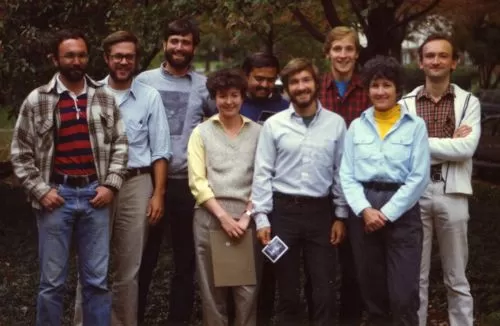
During the mid to late 1990s, ETE's permanent staff remained constant, while a large number of students, interns, contractors, pre- and post-doctoral fellows worked with the program. During this time, ETE continued to support fieldwork undertaken by core members. Gerry McBrinn worked with Damuth on further improvements to the ETE database, and a large data entry project on the late Cenozoic vertebrate faunas of Africa began. During this time, there were typically 5-6 active contracts, post-doctoral fellows, interns, and/or volunteers, including Nancy Todd. Data acquisition continued and information on insects, Cenozoic plants of North America, and Paleozoic plants of Europe and North America were entered into the database.
In 2002, Matthew Carrano joined the Department of Paleobiology and shortly afterward became a member of the ETE program. In 2007, Kate Lyons joined the Department of Paleobiology as a research associate and quickly became a member of ETE. In 2008, she was hired as a staff scientist by ETE.
Collaboration with the Paleobiology Database (PBDB)
In the fall of 2000, ETE formed a collaboration with the PBDB to help expand their databasing effort to the terrestrial fossil record. The collaboration led to merging the ETE and PBDB data sets and database formats, as well as offering joint financial support to several projects. Data in the ETE database as of 2002 were transferred to PBDB format (ETE records are labeled as such within the PBDB), although most ecomorphic data fields remained in the ETE Database. The transfer was accomplished through ETE contract support of Matt Kosnik (postdoc at NMNH 2009-2010) and through addition and modification of the PBDB structure to accommodate some data types present only in the ETE database structure. Most current and future data entry supported by the ETE will use the PBDB's formats and web-accessible entry forms. As part of the ETE/PBDB collaboration, Hallie Sims (University of Iowa) was at NMNH in 2001-02 to help direct and coordinate data entry for the Phanerozoic Paleobotany Working Group, jointly supported by ETE and the PBDB.
The 30th Anniversary of the Evolution of Terrestrial Ecosystems (ETE) Program
On the evening of March 30th, the ETE Program held a public event in Q?rius to mark its 30th anniversary of research, education, and outreach about terrestrial ecosystems through geological time: Survivors - What Fossils Tell Us about the Past and Future
This event was included in the “After Hours” and “Anthropocene: Life in the Age of Humans” discussion series at NMNH, but pioneered a new format, with a series of talks combined with hands-on activities. ETE co-directors Kay Behrensmeyer and Kate Lyons, along with ETE post-doctoral fellow Silvia Pineda-Munoz, collaborated with the NMNH Office of Education and Outreach and the staff and volunteers of Q?rius to plan and produce the evening program.
Growth of the terrestrial component of the PBDB now invloves projects by ETE curators, associates, and student assistants as well as external researchers who are organized as PBDB working groups. Hallie Sims remains leader of the Paleobotany Working Group, and Anna K. Behrensmeyer is a coordinator for the PBDB Taphonomy and Paleoecology Working Group. The ETE Core Group now consists of 8 NMNH scientists.

